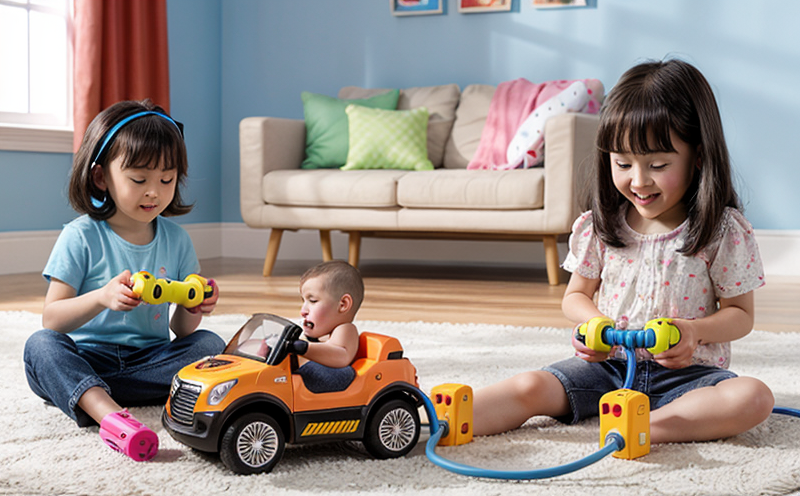IEC 62115 Short Circuit and Overcurrent Protection Test
The IEC 62115 standard is a crucial guideline in ensuring the safety of electrical and battery-operated toys. This test evaluates whether the toy's short circuit protection device functions correctly under specified conditions, thereby preventing potential hazards associated with overcurrent situations.
During this test, specimens are subjected to controlled short circuits, which simulate real-world scenarios where excessive current might flow through the toy's electrical components. The purpose is to ensure that the protection mechanisms installed within these toys can quickly and effectively interrupt the circuit when such conditions arise. This prevents overheating or damage to the toy itself as well as potential risks to children who may come into contact with it.
The testing procedure involves several key steps, including but not limited to:
- Preparation of the specimen according to IEC 62115 guidelines.
- Application of a defined overcurrent condition that simulates a short circuit event.
- Observation and measurement of the response time and effectiveness of the protection device in interrupting the current flow.
- Evaluation against specified criteria to determine compliance with IEC 62115 requirements.
The importance of this test cannot be overstated, especially considering that electrical toys are among the most frequently used products by children. A malfunctioning short circuit protection mechanism could lead to severe burns or other injuries if a child were to accidentally touch live parts during playtime. Therefore, compliance with IEC 62115 ensures not only regulatory adherence but also enhances product safety and consumer confidence.
In addition to safeguarding against immediate physical harm, the test also helps manufacturers identify design flaws early on in their production processes. By identifying these issues early, companies can implement corrective actions promptly, reducing costs associated with recalls later down the line while improving overall quality control practices.
For those responsible for overseeing toy safety standards across various industries—be it quality managers or compliance officers—the importance of conducting thorough tests like this cannot be emphasized enough. Understanding how these tests work is essential for ensuring that all products meet necessary safety criteria before reaching market shelves.
Industry Applications
- Manufacturers producing electrical and battery-operated toys targeting children aged three years and above.
- R&D teams developing new toy designs incorporating advanced electronics or novel power sources.
- Quality assurance departments responsible for ensuring compliance with international safety standards.
- Procurement professionals looking to source components that meet stringent safety requirements.
International Acceptance and Recognition
The IEC 62115 standard has gained widespread acceptance globally due to its rigorous approach towards ensuring the safety of electrical toys. Many countries have adopted this standard as part of their national regulations, making compliance with these tests a prerequisite for importing or exporting such products.
Given the stringent nature of IEC 62115, it is often preferred by consumers who prioritize product safety above cost considerations. This preference translates into increased demand for toys that comply with this standard, driving manufacturers to invest more resources into meeting its requirements.
The recognition of this standard extends beyond mere compliance; it represents a commitment to excellence in toy manufacturing practices. Companies that adhere to these stringent testing protocols not only enhance their reputation but also open up new markets where regulatory compliance is essential.
Environmental and Sustainability Contributions
The IEC 62115 standard includes provisions aimed at reducing waste generation throughout the lifecycle of a toy. By promoting durable construction techniques and materials that can withstand rigorous testing, this standard indirectly encourages manufacturers to adopt sustainable practices.
Achieving compliance with IEC 62115 also supports efforts toward minimizing electronic waste by ensuring products are designed for longevity rather than obsolescence. This approach aligns with broader sustainability goals set forth by various international bodies working towards reducing environmental impact from consumer electronics and related industries.
Furthermore, the emphasis on robust short circuit protection devices helps prevent accidents that could result in discarded toys being sent to landfills prematurely. As a result, adhering to IEC 62115 contributes positively to both human safety and planetary health.





